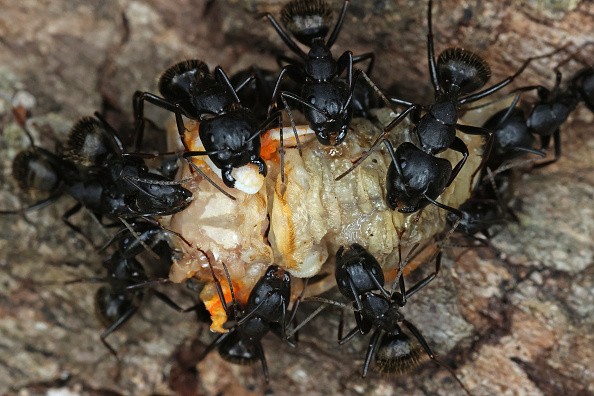In a recent study, researchers at North Carolina State University discovered that ants did not adjust their behavior in response to rising temperatures and remained in suboptimal microhabitats even when optimal ones were present.
The discovery suggested that ants may be unable to change their behavior in response to warming ecosystems.
Climate conundrum
 (Photo : Chip Somodevilla/Getty Images)
(Photo : Chip Somodevilla/Getty Images)

Ants are ectotherms or animals whose body temperature is affected by their surroundings.
While these animals are exposed to a wide range of temperatures in their daily lives, most ectotherms prefer habitats that are slightly cooler than the so-called optimal functioning temperature, which is the temperature at which an ectothermic animal can best perform all of life's functions, as per ScienceDaily.
An ectotherm risks approaching the lethal end of its physiology's spectrum if it encounters an environment warmer than the optimal point.
Ectotherms will perish if temperatures rise too high.
However, little is known about how - or if - insect ectotherms will adjust their behavior to avoid warmer but sublethal temperature ranges, where functioning is physiologically possible but not optimal, which are becoming more likely as a result of global climate change.
NC State researchers studied five species of ants found in North Carolina to learn more about how insect species may respond to warmer, sublethal temperatures.
To identify the distribution of available microhabitats, the researchers counted and collected ants in forest ecosystems and measured air temperatures at collection sites.
The researchers also used a one-of-a-kind ant thermometer to determine the temperature of the ants, which varied by ant color and body size.
Finally, the researchers collected ants for the lab and placed them in a rectangular chamber with a controlled temperature gradient to determine each species' preferred temperature.
The researchers discovered that while ants in the lab had distinct thermal preferences, ants in the field were only slightly more active in their preferred climates than would be expected by chance.
Instead, most species were collected in warmer-than-desired locations, implying a lack of awareness or a limitation in their ability to adjust to rising temperatures.
"It's fascinating that the worker ants we observed were willing to put themselves in uncomfortable situations while foraging," said Sara Prado, an adjunct professor, and study co-author.
She is curious if the food was "profitable" enough for the ants to go above and beyond their comfort zones, or if they are simply willing to sacrifice their well-being for the sake of the colony.
Also Read: Ants: Our Saviors from Climate Change?
The response of ants to climate change
In light of rising temperatures, these two mechanisms, nest site selection, and intra-nest brood transport, lead to a simple prediction: many ant species will relocate their nests and alter their brood movement cycles to plastically adapt to warmer thermal regimes, as per Wiley Online Library.
As a result, by regulating nest temperature, ants will be able to mitigate the negative effects of rising temperatures and may even benefit from them.
The underlying cause of the ants' thermal preference in nest site selection is that temperature severely limits their metabolism, development, and performance in accordance with the thermal performance curve.
Ants use the hyper-local thermal gradients within their nests to boost developmental rates and supplement their broad-scale nest site selection.
Soil depth and nest aspect cause these local gradients.
Many species follow these intra-nest thermal gradients and transport their brood at different times of the day from cooler subterranean chambers to warmer chambers closer to the soil surface.
This allows them to optimize their brood's developmental rate.
Related article: Ants Can Support 5,000 Times Their Body Weight Before Losing Their Heads
© 2024 NatureWorldNews.com All rights reserved. Do not reproduce without permission.



![Climate Change is Reducing Dust Levels Worldwide as Arctic Temperature Warms [Study]](https://1471793142.rsc.cdn77.org/data/thumbs/full/70320/280/157/50/40/climate-change-is-reducing-dust-levels-worldwide-as-arctic-temperature-warms-study.jpg)

